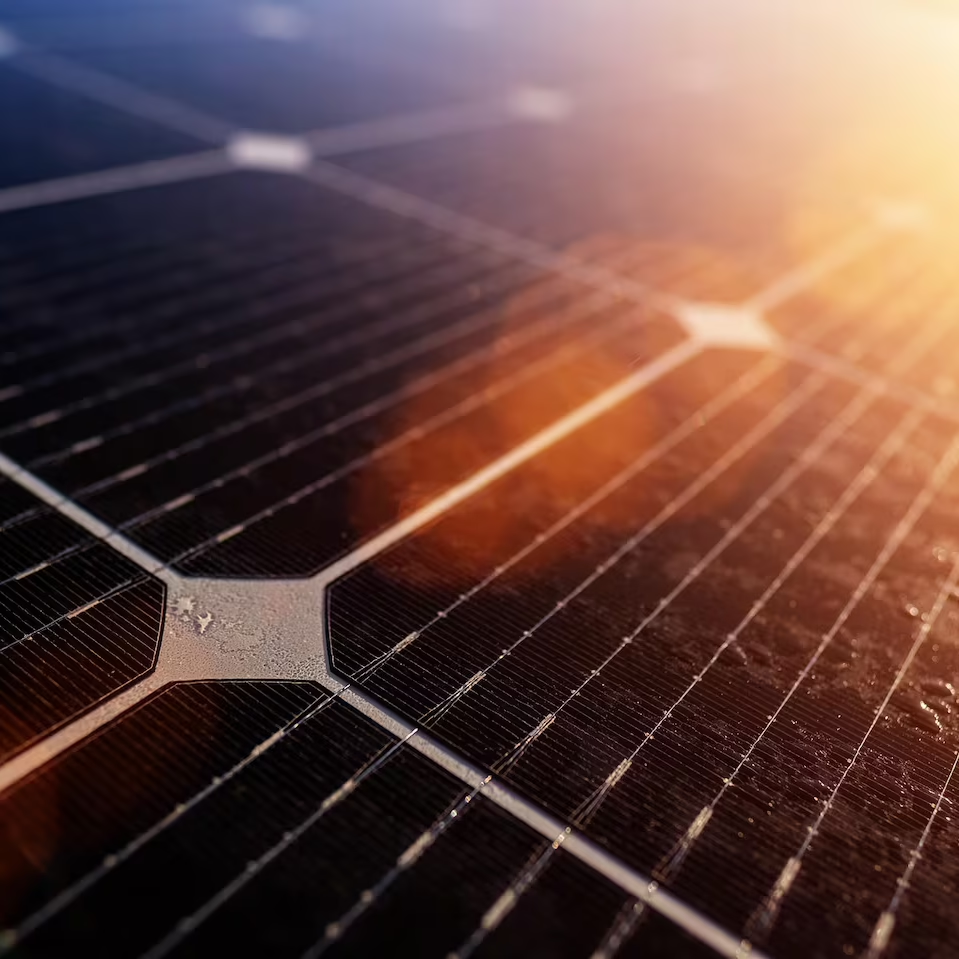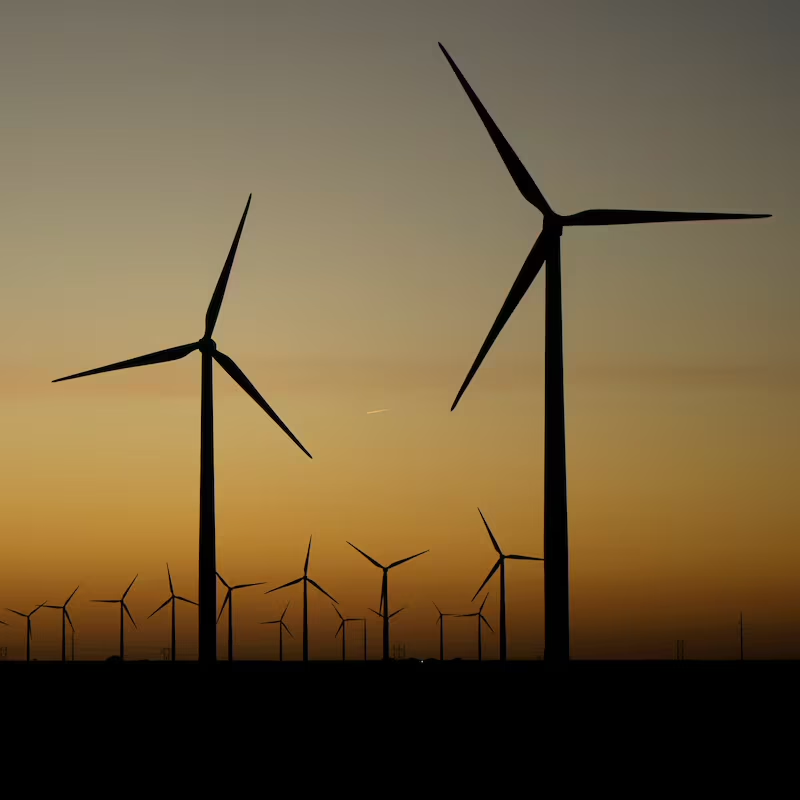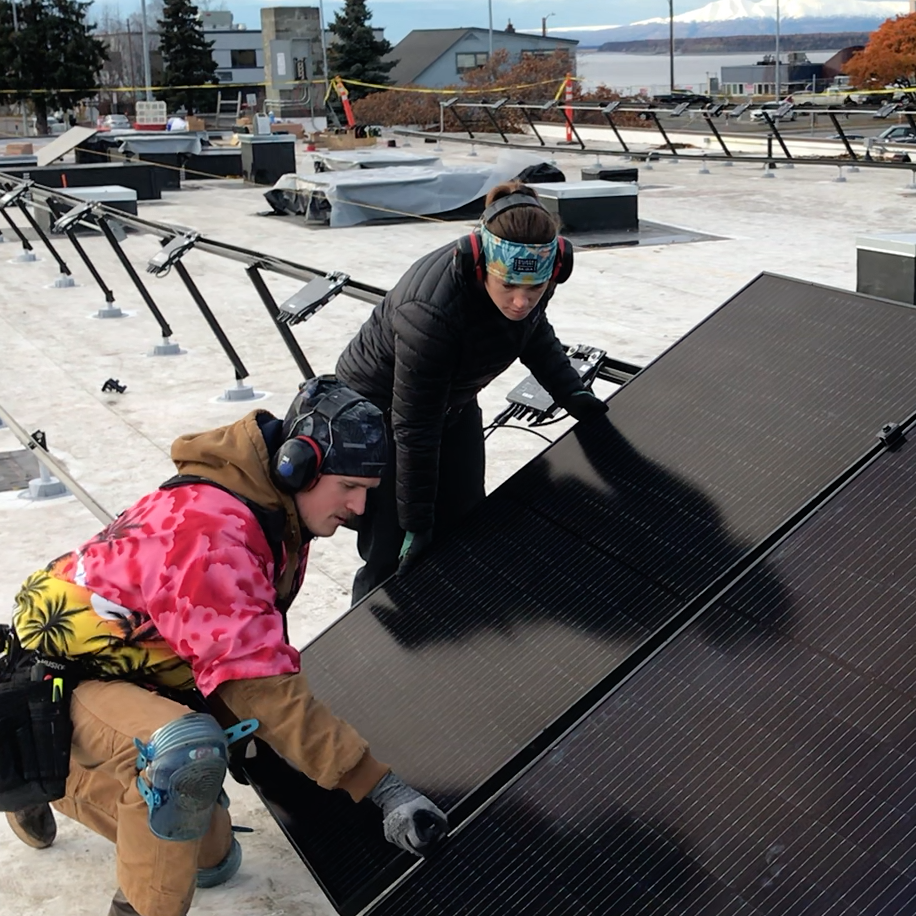Building Alaska’s Future With Solar
The Mat-Su Valley, a fertile glacier-carved bowl north of Anchorage, is famous for producing behemoth vegetables. But Jenn Miller saw potential in the 20 hours of summer sunlight for more than 130-pound cabbages: solar energy. Jenn and partners Chris Colbert and Sam Dennis developed Alaska’s first large-scale solar projects, and recently formalized plans for a project that will triple Alaska’s solar energy production.
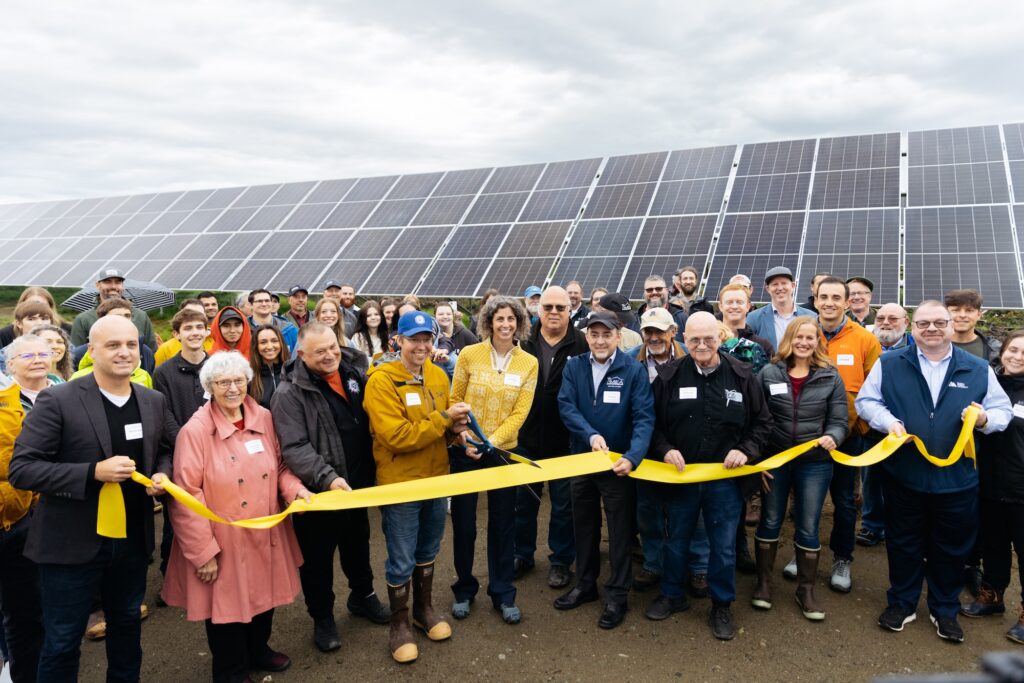
Houston Solar Farm Ribbon Cutting Celebration (2023). Photo Credit: CleanCapital
Jenn credits her Alaska upbringing with instilling in her a can-do attitude and the value of community. “In Alaska you develop a lot of self-reliance,” she says. “You form a pseudo-extended family with your neighbors. It’s a great upbringing – and because of oil money we had great funding for schools.”
It all started on the roof
After earning an engineering degree, Jenn worked as a facility engineer on Alaska’s North Slope, the start to a 14-year oil and gas career.
In 2017, Jenn, Chris and Sam, who all worked together at BP, put solar panels on their homes in Anchorage. They were impressed with how straightforward it was: “Oil and gas is a very high-hazard industry – you’re using highly combustible materials, there are safety concerns,” Jenn says. “When we put in solar we thought, ‘This produces energy, and all you have to do is plug and play – this is awesome!’ And it was economically competitive.”
The three considered helping friends put solar on their roofs, but had a better idea. “Our project management background told us that to have impact, you’re better off doing one large project than 100 small ones.”
Thus was born Renewable IPP, an independent power producer developing utility-scale solar generation in Alaska.
In 2017, there were already predicted shortages of Cook Inlet natural gas, which supplies the majority of energy for the 70% of Alaska’s population living in the “Railbelt.” Jenn and her partners approached Matanuska Electric Association, one of five Railbelt utilities, with a proposal for a 140-kilowatt project in the Willow area. They viewed it as a pilot project to build relationships and test their approach. Within a year, the project was complete and supplying energy to the utility.
Scaling up
The team did a second project, an expansion at Willow. While they self-funded the initial project, they secured a loan for the expansion through the Alaska Energy Authority. Two successful projects and state backing gave them the confidence to quit their day jobs and commit to solar.
Renewable IPP has since completed the Houston Solar Farm in the Mat-Su, the largest solar project in the state to date, built using 100% Alaska labor. Through Launch Alaska, Jenn said, Renewable IPP was introduced to national investors, and the Houston project secured financing from CleanCapital LLC, “which showed that institutional investors believe in Alaska and this is a deployable technology.”
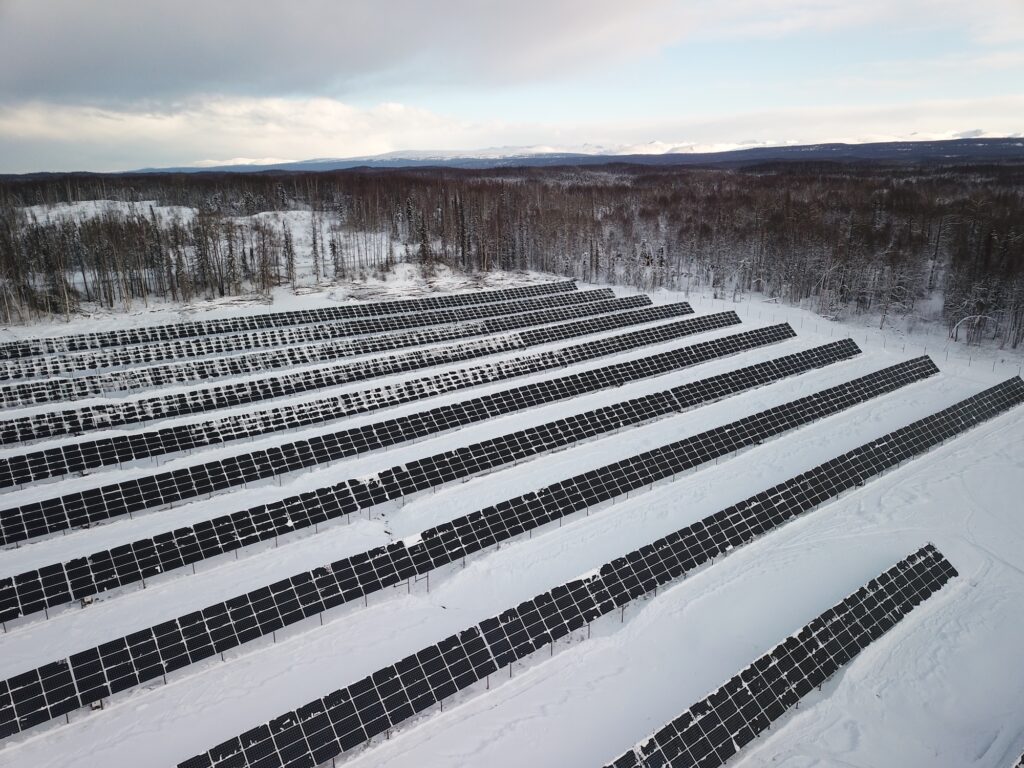
Willow Solar Farm in Winter. Photo Credit: Renewable IPP
In September, Renewable IPP signed a landmark agreement with Homer Electric Association (HEA) to enable development of the Puppy Dog Lake solar project. The project will double HEA’s renewable energy generation from 12% to 24% and triple Alaska’s solar energy production while delivering energy below HEA’s current cost of generation.
Renewables and relationships
Jenn anticipates continued growth of renewables in Alaska. She foresees U.S. manufacturing of materials like solar panels, and solar foundation and racking materials In-state, she notes, renewables can bring more price predictable and diverse energy that helps suppress energy prices and ideally attract new industry.
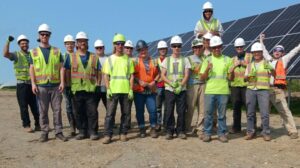
The Houston Solar Farm construction team. Photo Credit: Renewable IPP
Jenn is bolstered by AEA’s and the utilities’ efforts to modernize Railbelt transmission so renewable energy projects can tie in efficiently: “I think that is truly the next big thing for our state. Build the ‘federal highway system’ within the transmission system so private industry can thrive within that backbone.”
Asked what advice she would give others entering the renewable energy space, she said it’s all about building relationships. “We really believe in collaboration, and finding that balance and shared value across the stakeholders,” Jenn says. “We started with a 140kw project which is [very small], but it allowed people to get to know us and trust us. Trust makes the world go round.”
****************************
To learn more, listen to Jenn’s August 2024 interview with CleanCapital co-founder Jon Powers on his podcast Experts Only.
This story was written and produced by New Energy Alaska.
January 2025
